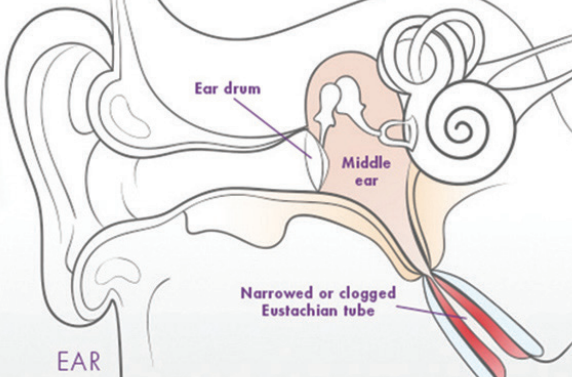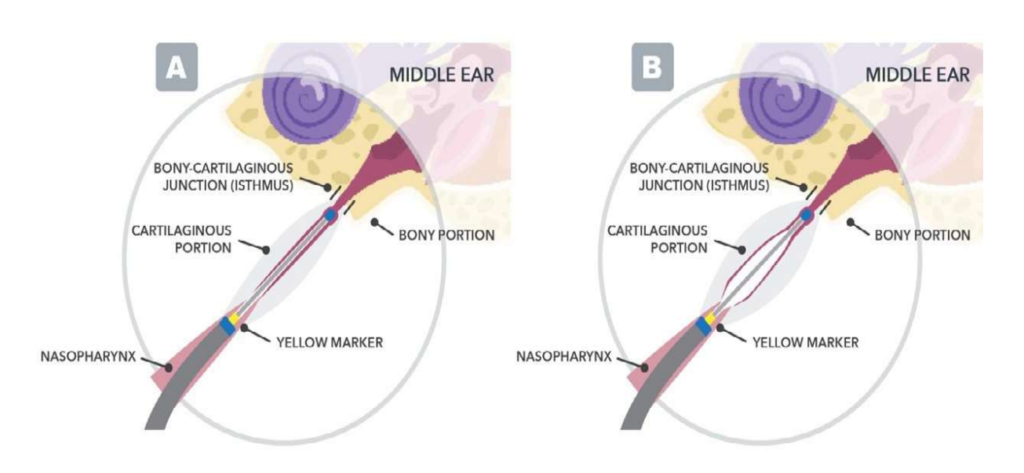
menu

Eustachian Tube Dysfunction (ETD) is a prevalent condition where the tubes connecting the middle ear to the back of the throat become blocked, leading to hearing and pressure regulation problems. The Specialty Care Institute’s team of experts offers a variety of effective treatments to alleviate ETD symptoms.

What is Eustachian Tube Dysfunction?
ETD is a medical condition where the Eustachian tube, which links the middle ear to the throat’s back, becomes partially or fully obstructed, causing a pressure imbalance between the middle ear and the atmosphere. This narrow tube is usually closed but opens when you swallow, yawn, or chew, allowing it to regulate pressure.
Eustachian tube dysfunction occurs when the valve of the Eustachian tube fails to open or close properly, resulting in pressure and pain. This obstruction can result from various causes, such as infections, allergies, and structural abnormalities.
ENT specialists at Specialty Care Institute can diagnose ETD through physical exams, medical history reviews, and hearing or imaging tests. During their evaluation, your ENT specialists may ask you the severity of certain symptoms you are experiencing to better understand the severity of your condition.
Early medical attention is critical to prevent long-term hearing difficulties and other ETD-related complications.
What Are Some Common Symptoms of Eustachian Tube Dysfunction?
Symptoms of ETD vary based on the condition’s severity and underlying cause. Common symptoms include:
Some people with ETD may not experience symptoms, while others may have severe symptoms. If you are experiencing any of these symptoms, schedule an appointment with your ENT specialist at Specialty Care Institute for a proper evaluation and treatment.
What Treatments Are Available for Eustachian Tube Dysfunction?
The ENT specialists at Specialty Care Institute offer various treatments for ETD, including anti-inflammatory drugs, decongestants, nasal sprays, and ear-popping exercises. These medications and exercises help to reduce inflammation and swelling in the Eustachian tube, making it easier to equalize pressure.
Surgical treatments for ETD are available for those who need a more invasive approach, including Myringotomy, Eustachian Tube Balloon Dilation (ETBD), and Eustachian Tube Stent Placement. The best treatment for ETD depends on an individual’s symptoms, medical history, and the underlying cause of the condition.
Your ENT doctor at Specialty Care Institute will determine the most appropriate treatment for you.

What is Eustachian Tube Balloon Dilation?
Eustachian tube balloon dilation, or ETBD, is one of the most common treatment methods for eustachian tube dysfunction. ETBD is a minimally invasive procedure that involves inserting a small balloon catheter into the Eustachian tube through the nose.
The balloon is then inflated to widen the tube and improve its function. This allows for better airflow and pressure equalization in the middle ear.
ETBD is typically performed as an outpatient procedure under local anesthesia, and patients can usually return to normal activities on the same day. It has been shown to be safe and effective for treating Eustachian tube dysfunction in both adults and children.
At The Specialty Care Institute, we are proud to offer the advanced Acclarent Aera. The Acclarent Aera is a device that uses low-pressure pulsations to open the blocked eustachian tube, allowing for proper ventilation of the middle ear and equalization of pressure.

This minimally invasive procedure can be performed in your ENT specialist’s office and typically takes no longer than thirty minutes, with many people returning to normal activities immediately after. Acclarent Aera is a safe and effective alternative to traditional surgical methods for treating ETD.
It’s crucial that the decision to use Acclarent Aera be made by your ENT doctor at Specialty Care Institute after evaluating your symptoms and medical history, as it may not be the best treatment option for everyone.
Are you experiencing ETD symptoms? Schedule an appointment at Specialty Care Institute in Elgin, IL, today to speak with your ENT doctor and determine if Acclarent Aera is the right treatment option for you.